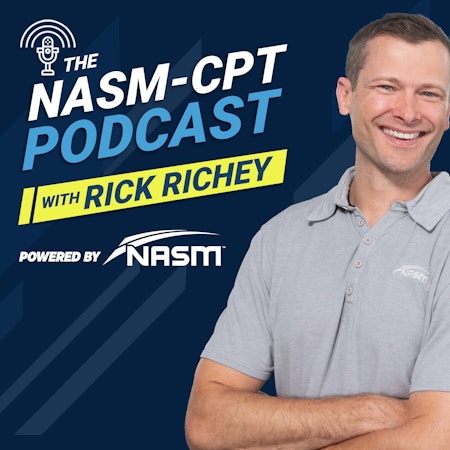
The NASM-CPT Podcast With Rick Richey
Are you studying to become a personal trainer or just started your training career? NASM Master Instructor Rick Richey takes listeners on an informative and engaging journey to help establish a solid foundation in your fitness path.
401
Encore Presentation: Business Building Basics f...
30 min
402
Discussing the NASM Certified Wellness Coach
59 min
403
Problem Areas: Runner’s Knees, Jumper’s Knees
18 min
404
KPI for Trainers
16 min
405
Getting the Most of Your 30-minute Workout
15 min
406
Inside the NASM-CSNC
24 min
407
Training: How Much is Too Much?
21 min
408
Internal vs. External Cueing
21 min
409
Constraints-Led Approach to Training
24 min
410
Encore Presentation: Balance Training in the OP...
42 min
411
Do They Really Work? Vibration Platforms
14 min
412
Client SMART Goals
16 min
413
Understanding NASM EDGE App
43 min
414
When to Raise My Rates
16 min
415
Do They Really Work? Vibrating Foam Rollers
11 min
416
Do They Really Work? Massage Guns
14 min
417
Strengthening Your Fitness Sales
49 min
418
Challenges in Programming
21 min
419
A Look Back: Optima 2021
22 min
420
Encore Presentation: All About the One Rep Max
23 min
421
The Truth About Air Compression Sleeves
17 min
422
Open Your Own Gym – Getting Started!
62 min
423
Bench Pressers Overarching Issues
13 min
424
All About the Rotator Cuff
20 min
425
Understanding Arthrokinematics
15 min